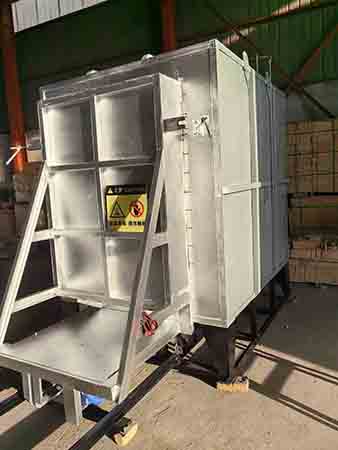How to Select the Right Insulation for Your Furnace: A Guide Based on Temperature Ranges
Choosing the right insulation material for your furnace is crucial for energy efficiency and safety. Factors like operating temperature, thermal resistance, chemical stability, and others must be considered. Here’s a guide to selecting appropriate insulation materials based on different temperature ranges.
For environments that do not exceed 1000°C, fiberglass wool is an excellent choice due to its suitability for lower temperatures. Additionally, common alumino-silicate fiber wool offers superior thermal insulation, making it ideal for general industrial furnaces.
When working within this higher range, consider standard, high-purity, or high-alumina types of alumino-silicate fiber wool. These materials can withstand elevated temperatures while maintaining effective thermal insulation. For applications requiring even greater heat resistance, zirconium-aluminum or zirconium-containing alumino-silicate fiber wool can endure temperatures surpassing 1400°C.
Ceramic fiber wool is typically used in ultra-high temperature settings. Known for its exceptional heat resistance and low thermal conductivity, ceramic fiber wool ensures optimal performance in extreme conditions.
Moreover, flexible insulating jackets are suitable for a temperature range of -30°C to 1200°C, offering reduced thickness and enhanced energy efficiency.

The longevity of insulation materials depends on various factors including temperature, humidity, chemical environment, mechanical damage, installation quality, and maintenance practices.
At cooler temperatures, most insulation materials remain stable, contributing to longer life spans. However, exposure to moisture or condensation can degrade their insulative properties and structural integrity.
As temperatures rise, insulation materials undergo some degree of thermal aging. Alumino-silicate fiber wool tends to maintain good stability within this range, though prolonged exposure near its upper limits may accelerate degradation.
High temperatures impose significant thermal stress on insulation materials, potentially leading to rapid aging, shrinkage, or failure. While ceramics are designed for extreme temperatures, continuous exposure to maximum temperatures can still reduce their lifespan.
Frequent thermal cycling, such as those caused by frequent furnace startups and shutdowns, imposes additional strain on insulation materials, negatively impacting their durability.
In conclusion, there's no one-size-fits-all formula for calculating the exact lifespan of insulation materials at specific temperatures due to the variability of influencing factors. To maximize the lifespan of your insulation, select high-quality materials suited to the intended temperature range, ensure proper installation, and perform regular inspections and necessary maintenance. Protecting against physical damages, including potential harm from rodents and other small animals, is also critical.
BAI KA Copyright © 2025 ALL rights reserved